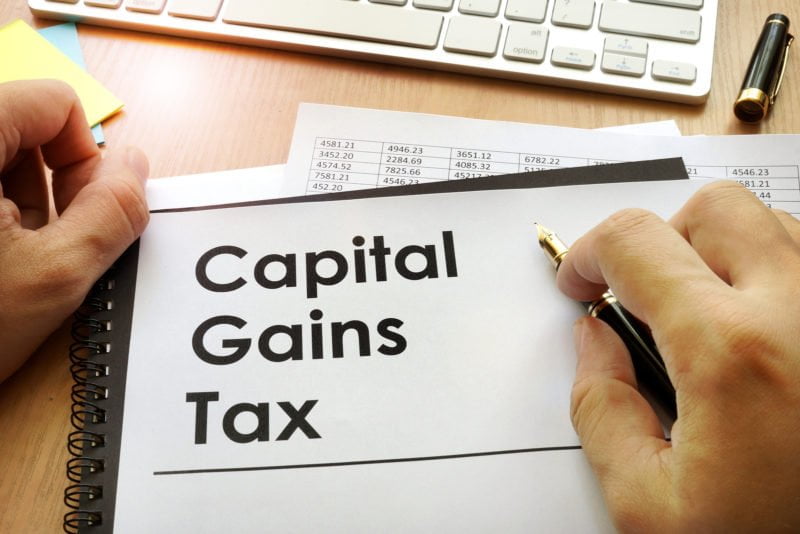The vast majority of property investors pay Capital Gains Tax (CGT) on a rental property when they sell, or dispose, of it. So it’s important to understand what is CGT and how it is calculated. In this post, we will find out:
- WHAT IS THE CAPITAL GAINS TAX?
- HOW MUCH IS IS THE CAPITAL GAINS TAX?
- HOW TO CALCULATE YOUR CAPITAL GAIN?
What is Capital Gains Tax?
Capital Gains Tax was introduced in Australia in 1985 and applies to any asset you’ve acquired since that time unless specifically exempted.
According to the Australian Tax Office, a capital gain or capital loss on an asset is the difference (the gain) between what the property was the cost to you (we call this Cost Base) and what you receive when you dispose of it (we call this sale to proceed).
Tax is levied on again made as a result of the sale proceed, which forms part of your income tax and is NOT considered a separate tax – though it’s referred to as CGT.
In most of the cases if an asset is held for 12 months or more, then any gain is first discounted by 50% for individual taxpayers and most Trusts or by 33.3%for superannuation funds.
Capital loss from one asset can be offset against capital gains from other assets, and net capital losses in a tax year may be carried forward indefinitely.
However, if there is a capital loss, then it will be either used to offset other capital gains in the financial year or carried to later financial years forever until it is offset up.
According to the ATO, most personal assets are exempt from CGT, including your home (main resident property), car, and most personal use assets such as furniture. CGT also doesn’t apply to depreciate assets used solely for taxable purposes, such as business equipment or fittings in a rental property.
Foreign residents only pay capital gain tax if a gain is made on an asset that is ‘taxable Australian property’.
If you’re an Australian resident for tax purposes, CGT applies to your assets no matter which country it is located.
When you sell off an asset it’s called a CGT event, which is the moment when you make a capital gain or capital loss. Therefore the timing of a CGT event is important because it tells you in which income year to report your capital gain or capital loss, and may affect how you calculate your tax liability.
In the case of real estate, for example, the CGT event generally occurs when you enter into the contract (contract signed and exchange) – that is, the date on the contract, not when you settle.
How much is Capital Gains Tax?
CGT can be a little tricky to calculate, that’s why it’s so important to have a good accountant on your side – BOA & Co. is CGT specialist to safeguard your investment return.
Remember CGT is only payable in the financial year in which you sell or dispose of your rental property.
For most CGT events, your capital gain is the difference between your capital proceeds and the cost base of your CGT asset – that is, where you receive more for an asset than it cost you.
According to the ATO, the cost base of a CGT asset is largely what you paid for it, together with some other costs associated with acquiring, holding and disposing of it.
If the rental property or asset was acquired before 1985, then no CGT is payable, however, major improvements to a property since that time may be subject to CGT.
There are two main measures to calculate your CGT
The two different calculations are:
- CGT discount method
For assets held for 12 months or more before the relevant CGT event. Allows you to reduce your capital gain by:
- 50 per cent for individuals (including partners in partnerships) and trusts
- 33.33 per cent for a complying Self-managed Super Fund.
This is generally not available to companies.
- Indexation method
For assets acquired before 11.45 am (by legal time in the ACT) on 21 September 1999 (and held for 12 months or more before the relevant CGT event).
- Allows you to increase the cost base by applying an indexation factor based on the consumer price index (CPI) up to September 1999.
An example of using the CGT discount method is:
Justin purchased a rental property on 1 June 2016 for $300,000 and sold it for $350,000 on 15 July 2018.
As she owned the asset for more than 12 months she is entitled to the 50 per cent CGT discount.
She would need to also subtract the cost base from the capital proceeds, deduct any capital losses, then reduce by the relevant discount percentage.
There is a Capital Gains Tax calculators available on our website so you can work out how much CGT you might have to pay if you sell a rental property.
It’s important, of course, to speak to our taxation accountant when it comes time to decide on selling off or before lodging your income tax return to ensure you did it right.
Do you need professional assistance for your CGT concerns? Call BOA & Co. accountants in Chatswood on 02 9904 7886 and our specialists will be pleased to assist you.
Article Author:


